Our apartment has five windows with vertical blinds. These are a standard apartment window covering, but I think they’re hard to clean, and if the ceiling fan is on they go clack clack clack against each other. Not to mention that they aren’t very aesthetically appealing.
Here’s what I mean. And if you’re really lazy, vertical blinds hang crooked because you didn’t even move whatever was on the floor making them slant…
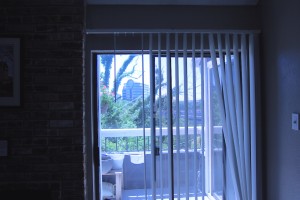 I’ve been considering these blinds since we moved in, because I could take various approaches to concealing or replacing them, but wanted to give it some time before deciding. For one thing, I thought that once I got used to them I might not mind so much. (No luck there. I kept minding.) But for another thing, I didn’t want to undertake a project that would make me sorry later when I had to undo it to move out.
I’ve been considering these blinds since we moved in, because I could take various approaches to concealing or replacing them, but wanted to give it some time before deciding. For one thing, I thought that once I got used to them I might not mind so much. (No luck there. I kept minding.) But for another thing, I didn’t want to undertake a project that would make me sorry later when I had to undo it to move out.
I could, for example, simply attach a curtain rod above the blinds and protruding out beyond them, and hang a curtain from it. When the curtain was closed, the blinds would be hidden, while remaining available to block the light if necessary. However, if you opened the curtains, you’d still see the aluminium track of the blinds along the top of the window. I felt that this approach would be covering up an essentially ugly feature by adding confusion, rather than really addressing the ugliness.
I could, of course, completely remove the blinds by unscrewing the track from the wall. This is tempting. However, it would be one more thing to replace when we move out, and would probably require drilling new holes for a curtain rod. But to me this is probably the second best option, and certainly the best for overall result.
However, I finally settled on what I thought would be the easiest and cheapest to do, and to undo later. I got the idea from Engineer Your Space, in this video:
This solution is to unhook the vertical slats from their hangers, and then hook curtains on in their place. This allows the curtains to open and close by the existing mechanism.
I chose to trial this project on our easiest window, the one from the living room which overlooks our east-facing patio. There’s no need for serious light management because no one sleeps there, nor does it get anything but nice morning sunshine, and there are no privacy issues because it’s a 3rd floor balcony. So the window covering is in fact purely decorative and psychological (avoiding open windows at night).
Unhooking the vertical blind slats was a little fiddly, but not hard. You can see here the clip that holds each slat, one empty and one with a slat still hanging on it.
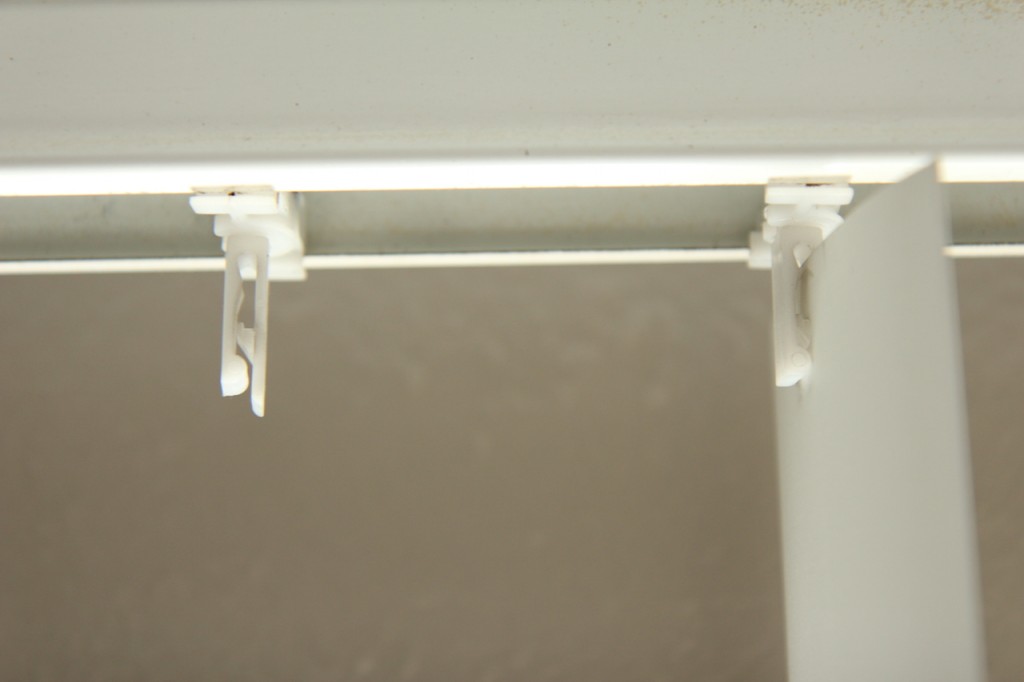 I bundled up the slats and rubber-banded them together, then rolled them up to store in a box in the closet.
I bundled up the slats and rubber-banded them together, then rolled them up to store in a box in the closet.
Then I made my curtain. Because I wasn’t totally sure of the project working, I didn’t want to spend a lot of money, so I used a thrift store sheet which I got for $2.99. We are all kinds of classy here.
I made it long enough to clear the floor by about an inch so it would swish along nicely. Those decorating shows and magazines are always telling us to let our curtains puddle on the floor. However, to me that seems like a recipe for 1) stepping on the curtain and pulling it down, 2) the curtain getting full of dust, 3) the curtain getting sucked up the vacuum, 4) the curtain requiring artistic arrangement every time you shift it. So no puddling curtains for me.
As for width, I think the official advice would tell you to make your curtain twice the width of the window (or of the space it will cover), which will give it some folds when it’s closed. Mine isn’t quite 2x the width of the window because my sheet wasn’t wide enough, so it’s probably more like 1.66x the width of the window.
Lazy woman that I am, I used the sheet’s hems on three sides, and sewed my own hem on the top.
I then used drapery hooks all along the top of the curtain (the YouTube video I linked shows them). They required pushing through a single layer of the fabric at the top hem.
The drapery hooks can then be hooked onto each existing clip on the track, the ones that used to hold the blinds. This was very easy to do. It means the curtain moves back and forth on the existing track.
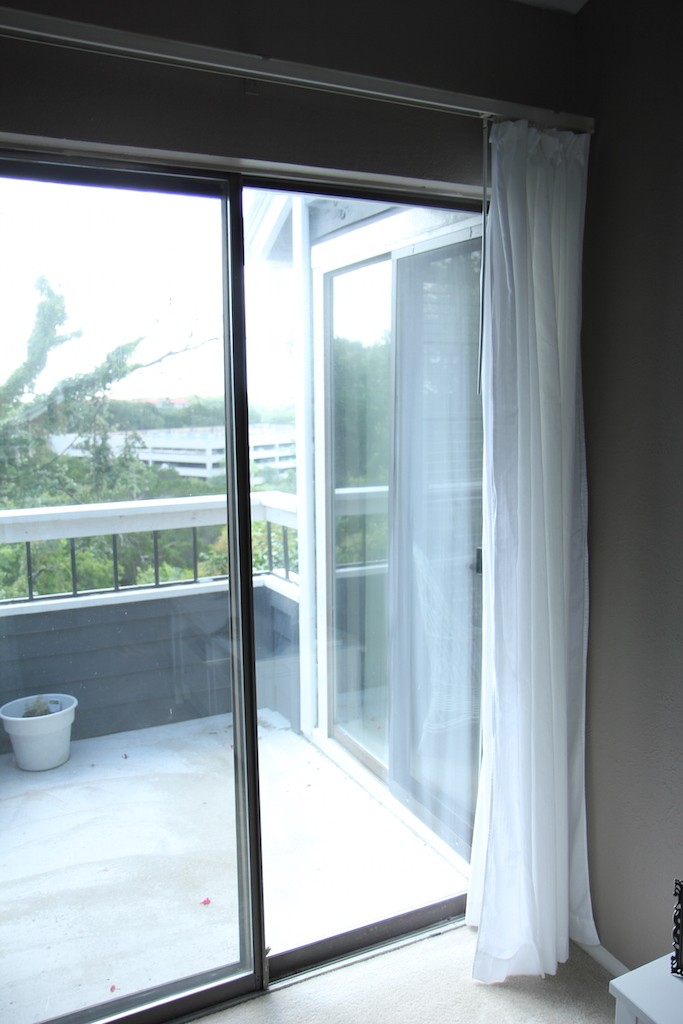 My white curtain isn’t particularly interesting as a design choice, but the strange colour of the walls in this apartment has really made me crave light, neutral colours, and I like the way light comes through a white curtain. At first I was unsure how much an improvement it was, but after living with it for a few days I’m sure I like it better than the blinds at least. If anything, it’s just much more pleasant to open in the morning than the clackety blinds.
My white curtain isn’t particularly interesting as a design choice, but the strange colour of the walls in this apartment has really made me crave light, neutral colours, and I like the way light comes through a white curtain. At first I was unsure how much an improvement it was, but after living with it for a few days I’m sure I like it better than the blinds at least. If anything, it’s just much more pleasant to open in the morning than the clackety blinds.
The final question remains – should I try to conceal the aluminium track above the window? It’s ugly, for sure, but I haven’t decided how much it bothers me. As with the blinds/curtain debate, I think I’ll leave it for a while and see how I feel. The YouTube video I linked above shows how to make a cornice to cover the track, which is probably the approach I would take. But for now the curtain is better than the blinds – yes, definitely much better!
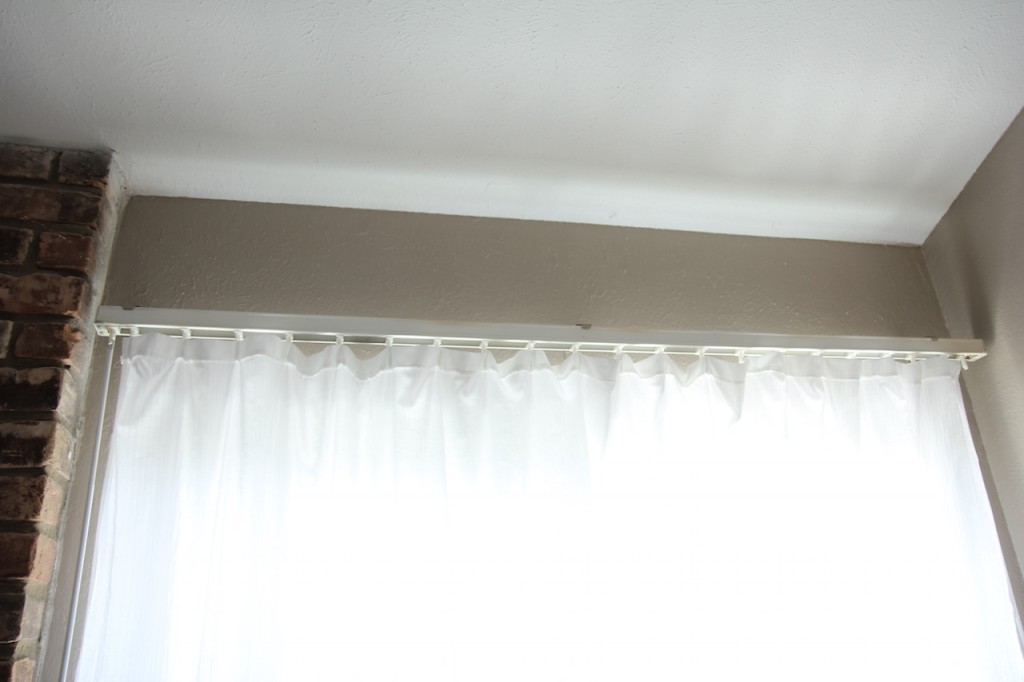
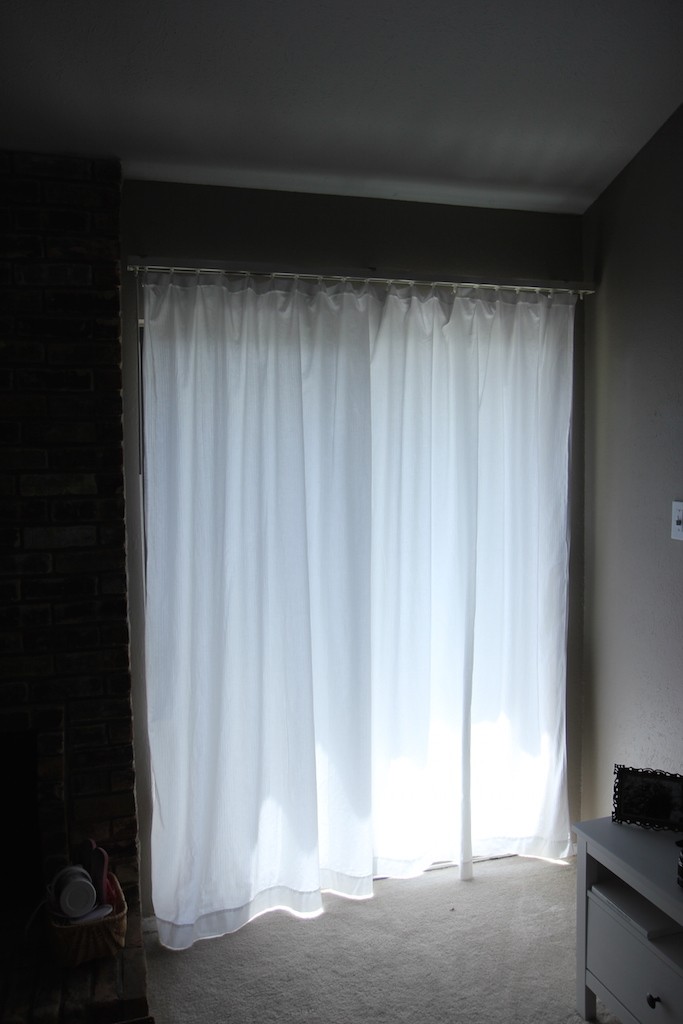
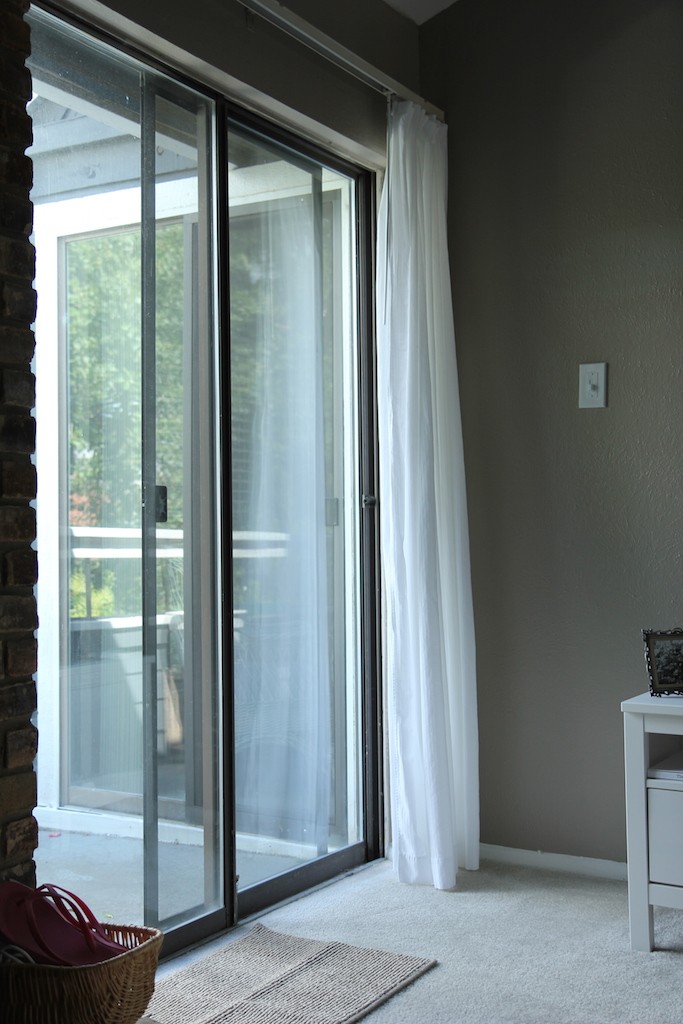
“And if you’re really lazy, vertical blinds hang crooked because you didn’t even move whatever was on the floor making them slant…”
I read this and assumed you meant Mike 🙂
Haha, poor Mike! In fact I meant myself!